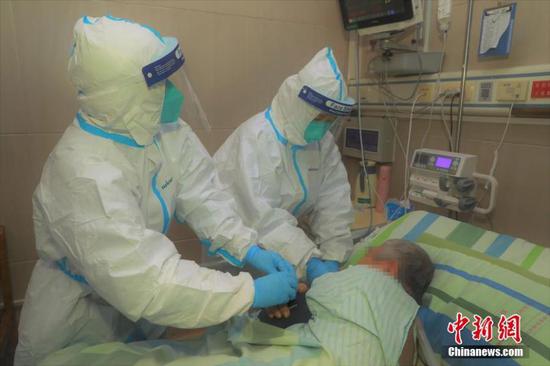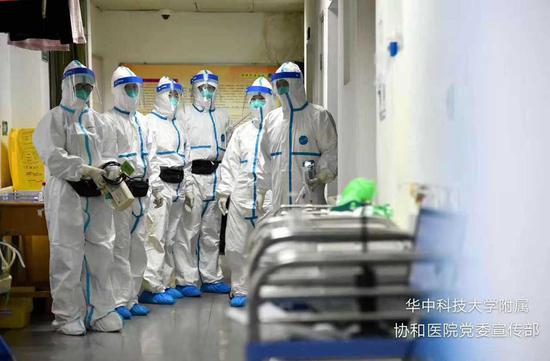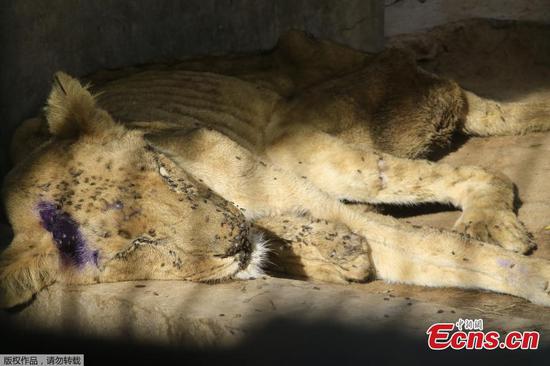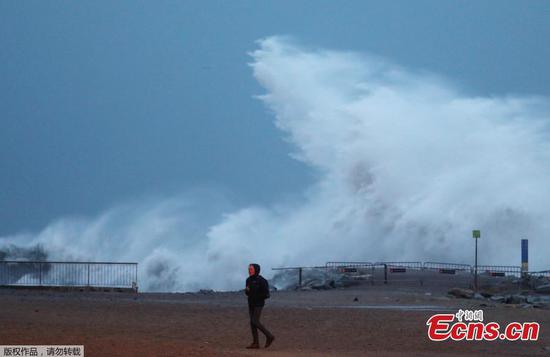What we know so far
- Confirmed cases:
Chinese mainland: over 300 (6 deaths)
Thailand: 2
Japan: 1
South Korea: 1
- Human-to-human infection confirmed
- The situation is still in its initial stage
- 2019-nCoV is less contagious and virulent than SARS
- The new virus is likely to have spread from wild animals to humans
- 95 percent of the cases are connected with Wuhan residents or people who have been in the city
- Wearing masks is recommended
Update: A brief summary of current cases (Jan. 21)
As of Tuesday, over 300 novel coronavirus cases and six deaths have been confirmed in China, according to the National Health Commission and local health commissions.
Among the confirmed cases, 258 are from Wuhan and 12 from its surrounding areas in Hubei Province. Other cases are confirmed in Beijing, Shanghai, Tianjin, Guangdong, Zhejiang, Henan, and Taiwan.
All six deaths happened in Wuhan, where the virus originated, while 25 infected patients in the city have been cured.
Most of the infected outside Wuhan have been to the city or had contact with people from the city.
Outside China, four cases have been reported: one in Japan, two in Thailand and one in South Korea. The one in South Korea is reportedly getting better.
New cases are still being reported across the country.
Update: A brief summary of current cases (Jan. 20)
As of 6:00 p.m. BJT, a total of 224 novel coronavirus cases have been discovered in China, 217 of which have been confirmed and the other seven cases are suspected.
Among the confirmed cases, 198 are from Wuhan, five from Beijing and 14 from Guangdong Province. Fifteen medical staff members were also reported to have contracted the virus.
Among the suspected cases, two are from Sichuan Province, one from Yunnan Province, two from Shanghai Municipality, one from Guangxi Zhuang Autonomous Region and one from Shandong Province.
Outside the Chinese border, four cases have been reported: one in Japan, two in Thailand and one in South Korea.
The World Health Organization (WHO) is convening an emergency committee of experts on Wednesday to assess whether the coronavirus outbreak in China constitutes an international emergency, the WHO said on Monday.
Update: Patient in Thailand has been cured and returned to China (Jan. 20)
The 61-year-old Wuhan traveler in Thailand has been cured. She has returned to China on January 18, an official in charge of disease control in the country told CGTN. She is the first patient found outside Chinese borders.
There are no more known cases of the new coronavirus in Thailand. The patient in Japan was also cured. But the condition of the 35-year-old female patient in South Korea is currently unknown to CGTN Digital.
Update: South Korea confirms first case of new virus (Jan. 20)
A 35-year-old Chinese woman who flew from Wuhan, China to Incheon international airport was confirmed first case of the new coronavirus in South Korea, the country's Centers for Disease Control and Prevention (KCDC) said.
She was isolated upon entry into the country due to symptoms such as high fever, KCDC said in a statement.
Update: Beijing and Shenzhen confirm new cases (Jan. 20)
On Monday morning, two new cases were reported in Beijing.
The two patients, who have a history of traveling to Wuhan where most of the recent cases have occurred, were admitted to a hospital in Beijing's Daxing District after extensive testing. Both of them are now in stable condition, no fever and respiratory symptoms have found.
A 66-year-old man living in Shenzhen was also diagnosed with the disease after he came back from his hometown in Wuhan on January 4, and was transferred to a hospital for special treatment on January 11. Local authorities also report another eight people who had close contact with the patients have been quarantined.
Update: 198 cases in Wuhan, 25 cured, three dead (Jan. 19)
Wuhan Health Commission reported 136 additional cases caused by the new type of coronavirus over the past weekend, with 33 in severe condition and a third death.
As of Sunday night, 198 pneumonia cases were reported in Wuhan, among which 25 have been cured and discharged from the hospital.
The initial investigation has found that the virus outbreak appears to be linked to a single seafood market, which is located in a densely populated area, not far from one of the city's busiest train stations.
But a recent analysis of the epidemiological data revealed that some of the cases had no history of exposure to the seafood market, according to the announcement.
A CGTN reporter has found that body temperature detectors were already placed at airports and railway stations in Wuhan amid the Spring Festival Travel rush.
Update: U.S. to screen airline passengers from China for new illness (Jan. 18)
U.S. Centers for Disease Control and Prevention officials told AP they will begin taking temperatures and asking about symptoms of passengers at three U.S. airports who traveled from the outbreak city of Wuhan.
Officials estimate roughly 5,000 passengers will go through the process in the next couple of weeks at New York City's JFK airport and the Los Angeles and San Francisco airports.
Update: 59 new cases confirmed (Jan. 18)
Fifty-nine new cases have been diagnosed with the new virus. All of the new patients are now in stable condition, and have been transferred to the same hospital for treatment.
Update: Second death confirmed in China (Jan. 17)
A second patient infected with the new coronavirus has been confirmed dead. Thailand has found and confirmed a second case of the virus as they ramped up checks on Chinese visitors, nearly a million of whom are expected for Lunar New Year holidays next week.
The two Chinese patients in Thailand are now safe but needed to go through a few more procedures before Thai authorities could let them return home, Thailand's Health Minister Anutin Charnvirakul told Reuters.
Update: Japan confirms first case of new virus (Jan. 16)
A pneumonia patient was found infected with coronavirus in Japan and was released from the hospital after treatment, the country's health ministry said.
The patient, in his 30s, had a fever on January 3 during his travel in Wuhan. He received treatment in a Japanese hospital after he returned on January 6, and was released on January 15.
According to the ministry, the man didn't go to the seafood market in Wuhan, which is believed to be the source of the outbreak.
Update: Human-to-human transmission not ruled out (Jan. 15)
The limited possibility of human-to-human transmission has not been ruled out in a recent case of pneumonia caused by a new strain of coronavirus in Wuhan, the local health commission reported.
A case of transmission between family members had been found. The husband was working at the local seafood market where the outbreak originated, and his wife has denied exposure to the market. Though human-to-human transmission is possible, sustained human-to-human transmission is a low risk, the authority added.
Update: Thailand confirms first case of new virus (Jan. 14)
The first case of novel coronavirus infection outside China has been detected in a Chinese tourist at the Suvarnabhumi Airport in Bangkok in Thailand, the World Health Organization (WHO) announced.
The 61-year-old female traveler from Wuhan was diagnosed with mild pneumonia on January 8. Later, a laboratory test revealed that the woman was infected with the virus.
According to Thai officials, the patient is showing no signs of serious illness and likely to be discharged in a few days. They also conducted a health check of 16 passengers traveling in close contact with the woman. Results suggested all of them are not affected.
Update: First death confirmed in China (Jan. 11)
The local health commission reported the first death amid the recent pneumonia outbreak in central China's Wuhan.
Update: A new coronavirus found to cause of pneumonia outbreak (Jan. 9)
The virus that caused the pneumonia outbreak in Wuhan was identified as a new type of coronavirus. Chinese researchers told reporters that they have successfully obtained the genetic sequencing of the virus from one patient and verified 15 patients were infected with that specific type of virus.
Coronaviruses are pathogens that cause respiratory and intestinal diseases. The viruses are named for the crown-like spikes on their surface. There are six known human coronaviruses, four of which are commonly affected in humans, generally causing only mild respiratory symptoms similar to the common cold. But the other two, severe acute respiratory syndrome coronavirus and Middle East respiratory syndrome coronavirus, also known as SARS and MERS, respectively, will cause serious symptoms.
Update: Not SARS: Pneumonia cases in Wuhan rises to 59 (Jan. 5)
A total of 59 pneumonia cases have been confirmed in Wuhan. The root cause of the outbreak is still under investigation, but SARS, MERS and bird flu have all been ruled out.
Update: 44 infected, 11 in critical condition (Jan. 3)
A total of 44 people are showing symptoms of pneumonia in Wuhan, of whom 11 are in serious condition, the city's Municipal Health Commission said on January 3.
Cases of viral pneumonia of unknown causes have been discovered in the city since December. Major symptoms include fever and difficulty breathing.
Thirty-three patients are in stable condition. They've been quarantined and are receiving treatment at medical institutions in Wuhan.
Update: China reports 27 unknown virus pneumonia cases, 7 are in critical condition (Dec. 31, 2019)
27 cases of viral pneumonia have been discovered in central China's Wuhan, after a city-wide surveillance conducted in December, according to local authorities. Seven out of the 27 cases are in critical condition, while the rest are "controllable," authorities said. Most of the patients worked at a local seafood market and are currently being quarantined.
A team of experts from the National Health Commission was sent to Wuhan to deal with confirmed cases of pneumonia originating from an unknown source. Hospitals and medical institutions have been asked to track and report suspected cases and provide treatment as soon as possible.


















































